I’m on my way to snorkel Lake Michigan’s reefs, and nobody’s buying it:
“There is no coral in Lake Michigan.”
“You’re not going to see anything in that cloudy water. Especially not reefs.”
“You do know that Lake Michigan is freshwater, right?”
All actual comments I heard, as I traveled across Michigan to Little Traverse Bay.
Skeptics aside, I really am here for the reefs. And while these reefs may look quite different from those of the Caribbean, they are nonetheless vitally important for Great Lakes native fish. So important that conservationists believe reef rehabilitation could be a key factor in restoring species like lake trout and lake herring.
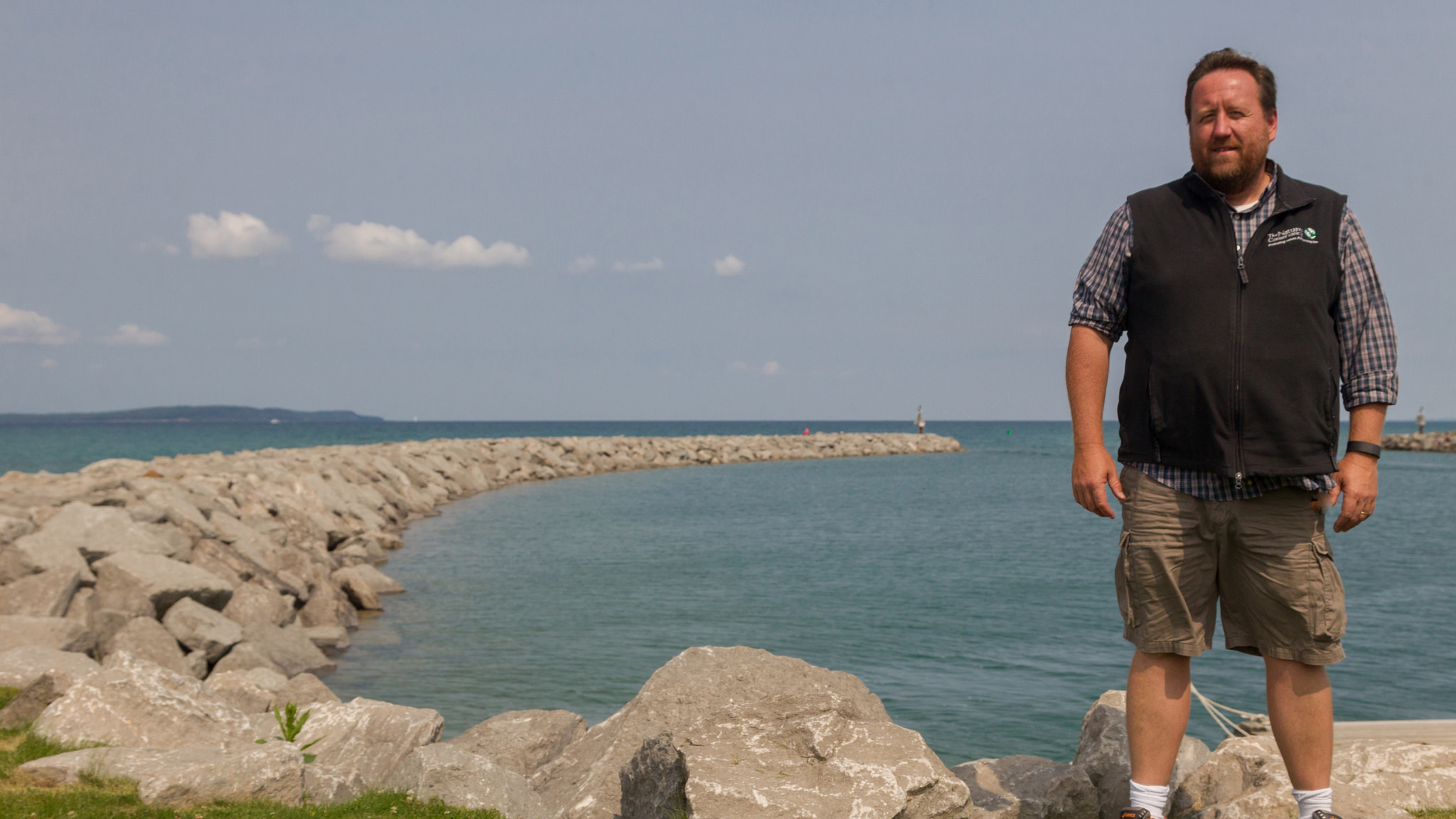
Matt Herbert, aquatic ecologist for The Nature Conservancy, is showing me the location of a soon-to-be-reconstructed reef. He is not surprised by the skepticism I’ve encountered.
“If you tell people about a tropical reef, everyone will have images in their heads. Even if they’ve never been to one, they know what a tropical reef is,” he says. “If you tell people about a Great Lakes reef, no one has any idea what you’re talking about.”
The Tangled Food Web
To understand Great Lakes reefs, you first have to take a look at the recent history of fisheries and food webs on Lake Michigan.
Once, the lake teemed with lake trout, lake herring and lake whitefish, supporting viable commercial fisheries well into the mid-1900s. It all seemed inexhaustible – but, of course, that was an illusion.
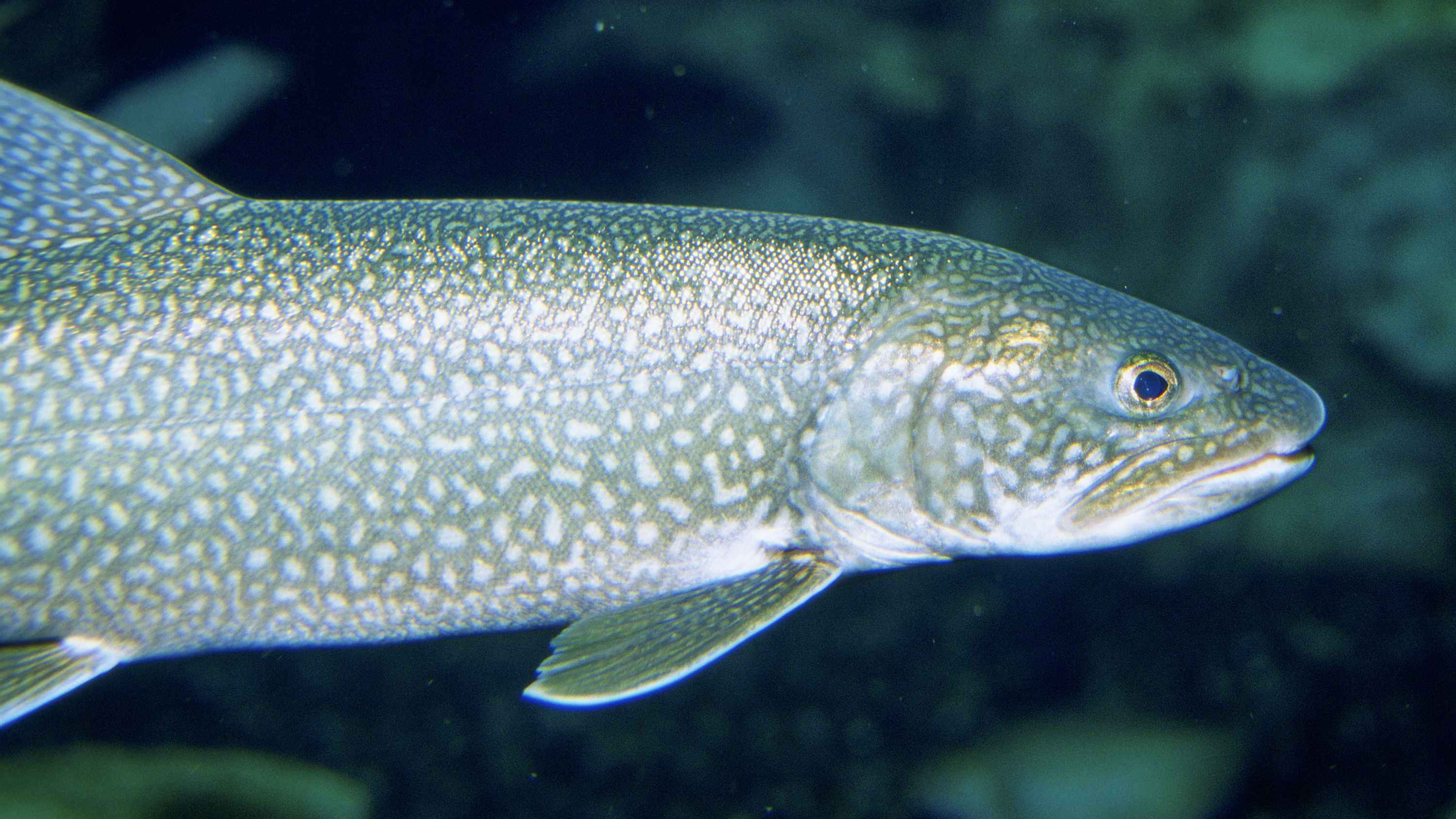
Around 1960, the lake herring population crashed – the victim of the triple whammy of overfishing, habitat degradation and invasive species.
Lake herring were not just an important commercial species, they also fed lake trout. The lake trout switched to non-native alewives. It was a poor substitute, kind of like replacing your vegetable intake with potato chips.
Lake trout need thiamine to produce viable eggs. Alewives have an enzyme called thaiminase that causes thiamine to break down, so when lake trout eat alewives, their thiamine levels drop so low they can no longer produce viable eggs.
And so, as went the lake herring so went the lake trout. In fact, the lake trout have not had meaningful levels of reproduction in Lake Michigan since 1960.
Instead, the U.S. Fish and Wildlife Service stocks just under 3 million lake trout fingerlings annually.
In 1999, Randy Claramunt was a fisheries biologist for the Little Traverse Bay Bands, a tribal government. Tribal members wondered why lake trout weren’t spawning, and why eggs weren’t surviving. Claramunt spent three years trying to find out.
“During that time period, I feel like I spent more time underwater than I did above water,” says Claramunt, now a biologist with the Michigan Department of Natural Resources. “We went to every conceivable spawning site we could find.”
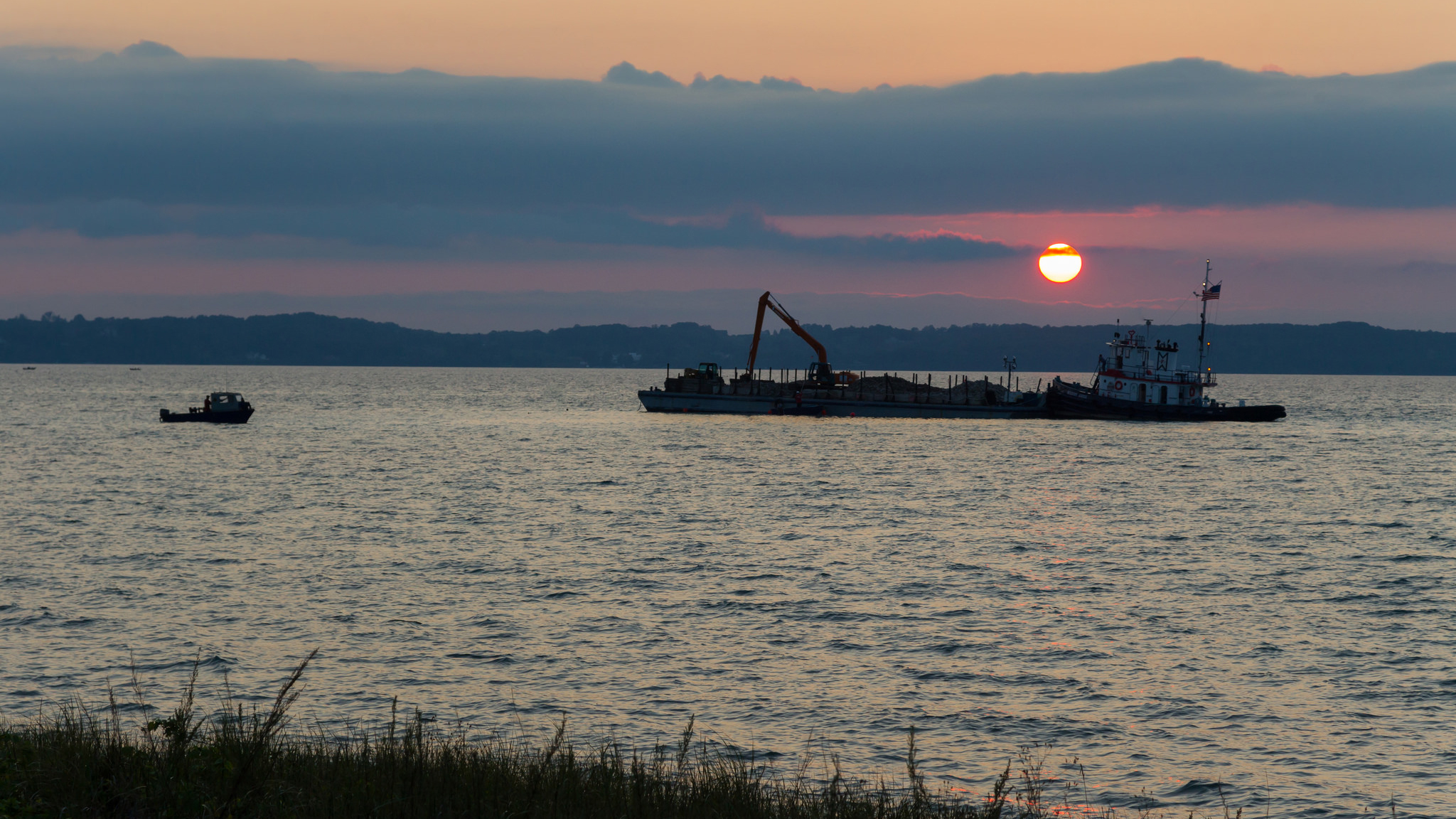
This meant finding reefs – raised, rocky structures. That’s where the fish were. They found reefs where lake trout would spawn, reefs where whitefish would spawn, and some where everything would spawn.
“We started thinking: what if we could find degraded or marginal habitat, and restore it so that it is similar to the reefs that are best for spawning fish,” says Claramunt. “If we were successful, one small reef could produce as many or more fish than the state hatchery.”
When looking at reefs, one on Grand Traverse Bay near Traverse City, Michigan, stood out. Nearby was degraded habitat where a new reef could be constructed. It took years of research to figure out how to best restore a Great Lakes reef. Now it’s time to actually put rocks in the water.
I’m joining Herbert, Claramunt and Central Michigan University graduate student Eric Calabro to visit the site of the new reef.
Not Just Any Rocks
Dark clouds loom but the water is still eerily calm as I don a wetsuit and snorkel. The boat is anchored in Grand Traverse Bay; Claramunt is already in the water and he’s motioning for me to jump in.
No sooner am I in the crystal-clear water (invasive zebra mussels have given the water a Caribbean clarity), than Claramunt is motioning me to look down.
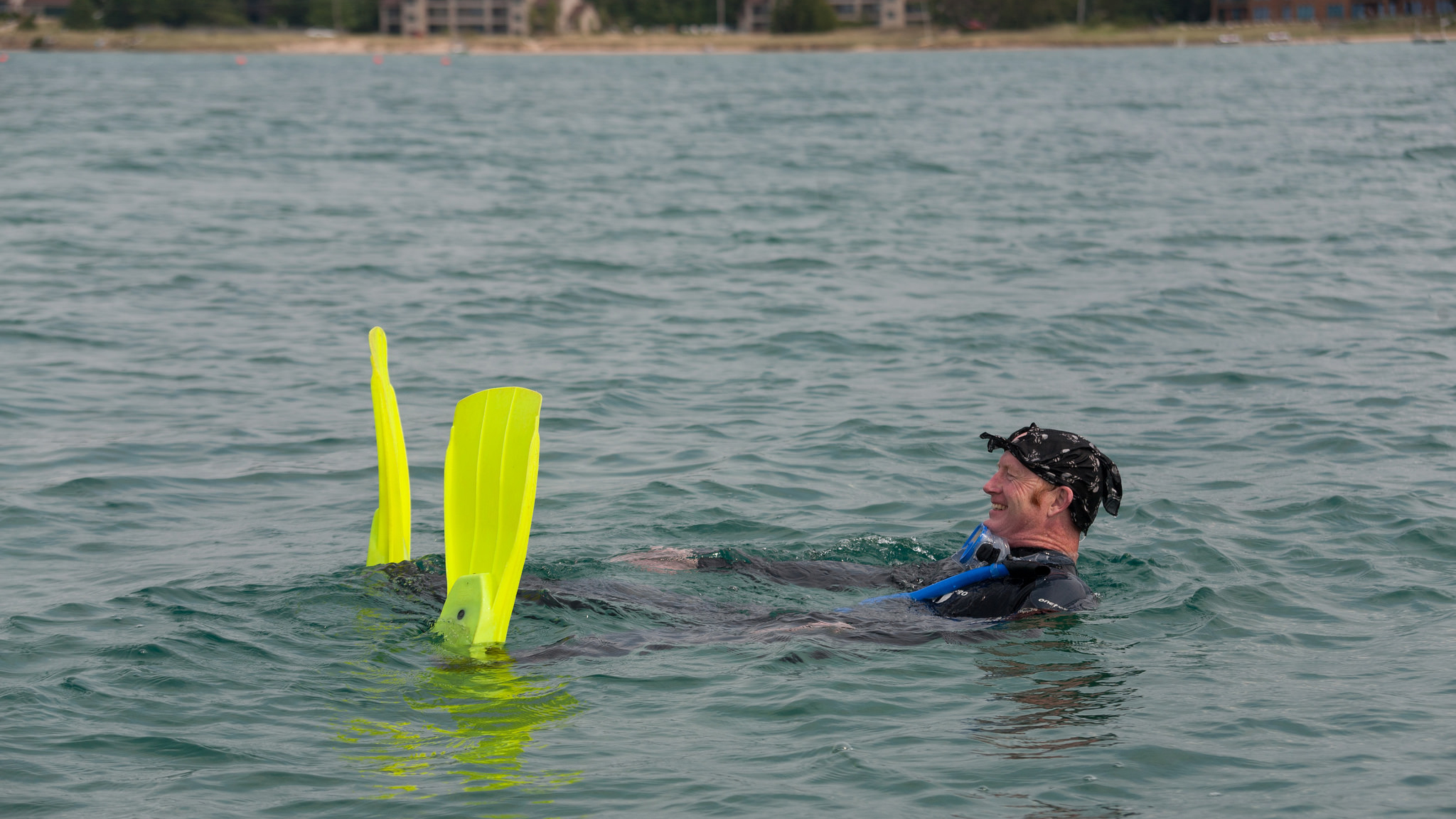
“You can see rocks everywhere, right?” he asks. “People know fish need rocks to spawn. So they’ll say, ‘There’s plenty of habitat here.’ Wrong.”
Fish need more than rocks. Claramunt starts swimming and motions for me to join him. Soon we come to a mound of rocks with a gentle slope: a reef. And no, it does not look like coral. But for the future of the Great Lakes, this modest-looking pile should probably have – pardon the pun – rock star status.
“From researching these reefs, we know the characteristics that make it awesome for fish,” says Claramunt. “You need rocks that are baseball to softball size. There needs to be some variation in size, of course. They need to be piled 6 to 10 feet high, with a recognizable slope. And you need currents that flow over the reefs to keep the eggs oxygenated.”
In September, a contractor delivered local rocks to create a reef with these exact characteristics, an effort led by the reef restoration team. The rocks were delivered to the bay in time for spawning fish to find them this fall.
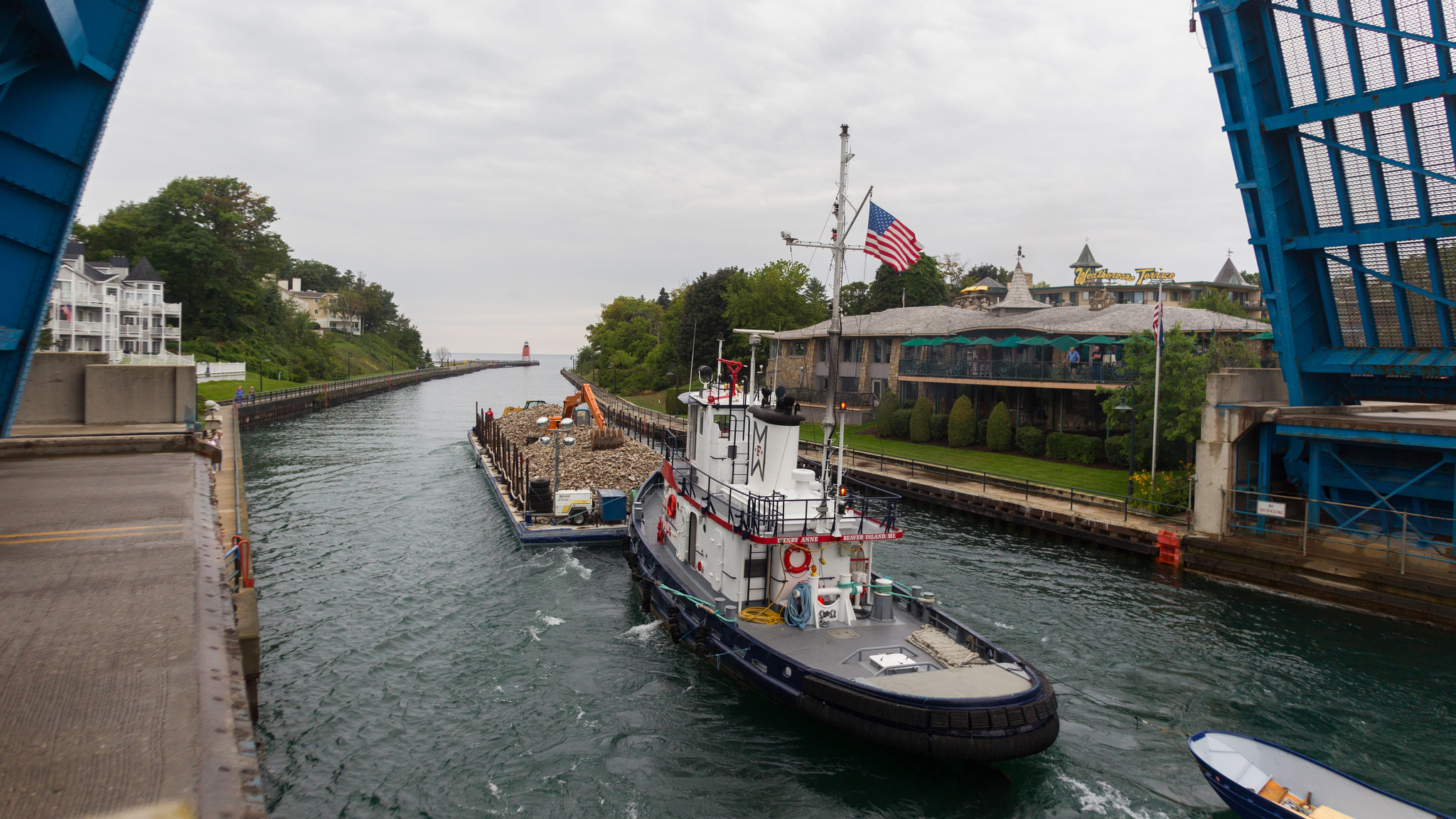
It isn’t new habitat: fish have spawned here in the past, but in low number and with poor success. The fish will find much improved habitat when they begin showing up – perhaps as early as when you’re reading this.
Invasive alewife populations have recently crashed, so the reef construction could be ideal for restoring lake herring.
“Lake herring have held on for 50 years as a small remnant population,” says Herbert. “The conditions are right to build that population up and have them function as a meaningful part of the ecosystem. More herring means more lake trout and other top predators.”
But even with reefs, there are two big challenges that come in small packages. As is so often the case in the Great Lakes, these challenges are invasive species: the round goby and rusty crayfish.
Invasion of the Egg Eaters
The round goby, a small fish with a big head, and the rusty crayfish look quite different. But they have two things in common: they’re everywhere in Lake Michigan. And they eat fish eggs. Lots and lots of fish eggs. These are two highly effective invasive species.
The gobies are well camouflaged on rocks. But even so, as I swam around, I saw them frequently. Ten feet below me I could see 20 or 30 of them clustered around a rock.
For the reef construction to be successful, these invasives have to be addressed. But they’re not easy to control. Even seismic blasts that bring other fish to the surface barely perturb gobies. Within twenty minutes of being blasted, the gobies were back to eating.
To control them, conservationists have to understand them – and how they’re using the reef.
“We would study reefs and how these species behave, but we would just be observing how they act on the surface,” says Claramunt. “Gobies and crayfish don’t interact with a reef in two dimensions. They interact with it on three dimensions.”
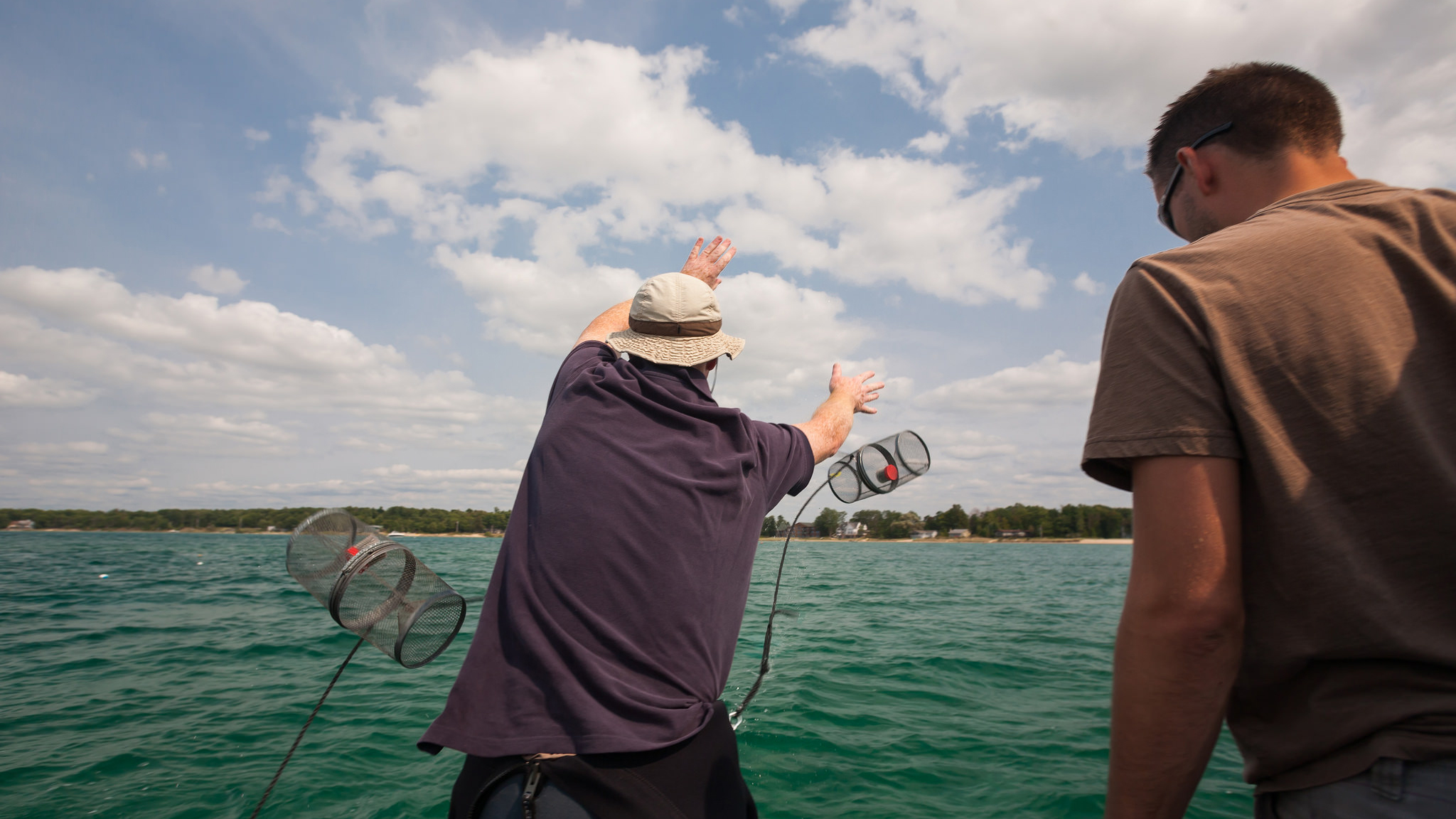
As part of the reef construction, baskets were placed throughout the reef. These baskets were filled with rocks and function as part of the reef. Eric Calabro’s graduate research will involve pulling those baskets and identifying how gobies and crayfish utilize the lower layers of the reef. This in turn will help conservationists develop localized control strategies.
Lake Michigan’s food webs have been constantly changing for decades due to changes brought on by people, from overharvesting fish to introducing wave after wave of non-native species. A human-engineered reef coupled with substantial research holds the best promise for restoring native species. This change brings Lake Michigan closer to being a healthy ecosystem and one that also benefits both commercial and sport fisheries.
“Millions of dollars are spent annually to raise lake trout in hatcheries. And they have to keep doing that every year,” says Herbert. “If we can get to the point where lake trout are self-sustaining, that also frees up money that could be used for more habitat restoration, including restoring reefs. That’s an exciting possibility. We have not had lake trout reproducing here in more than 50 years. This reef we’re about to construct could be the first step in reversing that.”
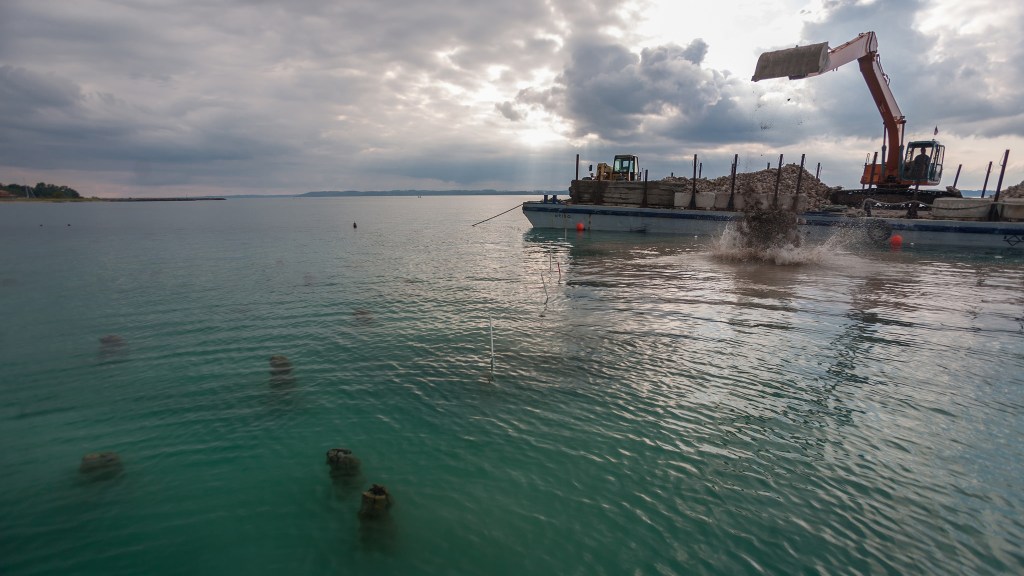



What has progress been like in the last nearly 7 years since this was written? So glad to see the Nature Conservancy heading up projects like this. Long time member here (25 or so years).
What about a goby & crayfish water vacuum cleaner to get a jumping start on eliminating the invasive species, since he saw 30 around one rock?
While there is no living coral in Lake Michigan there is actual fossils of coral to be found on its beaches and close to it’s shoreline under the water resting in the sand. The great lakes were all once salt water and the fossils that people find daily are proof of that. Why people who live near the great lakes don’t seem to know that is baffling to me.
I think it would be awesome to restore life in the Lake. I never knew this even existed! This should be taught in schools because it’s their future.
Nice, but were are the photos of the reefs? I lived in Chicago and would be anxious to see them.
I’m reading this in August 2019, and I’m very curious where things are today with this. Any updates or later articles on this?
Yes! get some results that will impress the skeptics.
This is so exciting, couple it with the vibe I’m getting from the talks in Paris fills me with hope and a revitalized determination to see works like this come to fruition.
I have often wondered why biologists and conservationists dont look to Lake Bikal for answers to our Great Lakes’ problems. Lake Bikal has a much more robust and dynamic freshwater ecosystem, which is much much older than the Great Lakes’ system. Why can we not find answers there?
The headline caught my eye and since I grew up in the Midwest pulled me in. 🙂 Would it make sense to promote tourism, that is, snorkeling, to see the fish? Save a plane ride to the Caribbean, help the planet and visit local: that kind of idea.
Either way, glad to see this work in the Great Lakes!
I’m so pleased to see the Conservancy working on The Great Lakes. I’d like to know, specifically, what kinds of rocks are being used to build the reefs and where, specifically, do you obtain them from? Also, are there any algae problems in those reef areas that are contributing to the decline in fresh water “good” fish?
Reefs in Lake Michigan? It caught my eye and I read the whole article. What action steps are needed.
Needed! Education!!!!